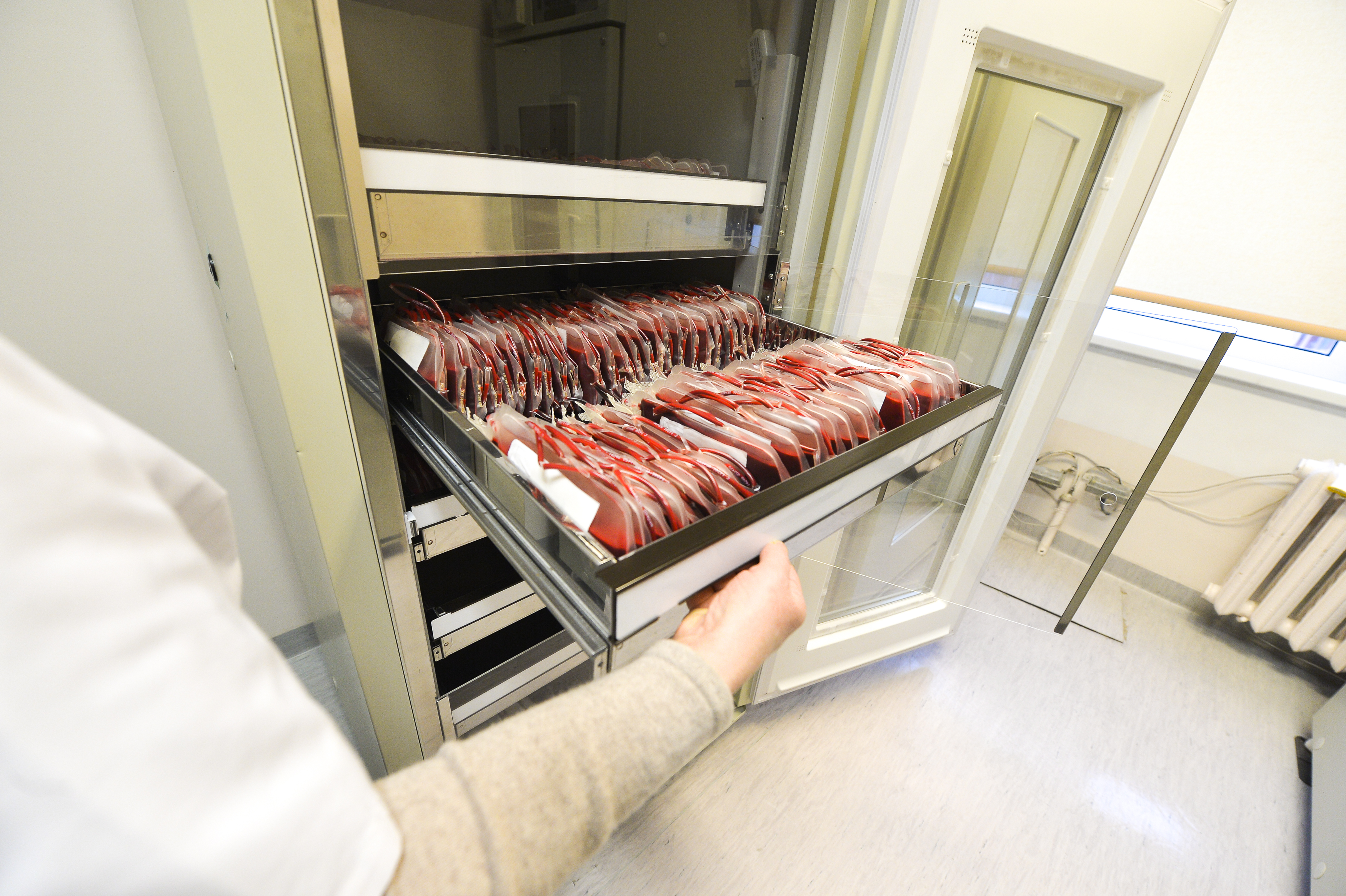Red Blood Cells (Erythrocytes)
Erythrocytes – red blood cells – are the cellular component of blood that is present in the greatest numbers. The haemoglobin in red blood cells binds oxygen in the lungs and transports it to the cells. The main purpose of red blood cells is to provide a normal oxygen supply to the body’s tissues and organs.
Like other blood cells, erythrocytes are produced in the bone marrow – the spongy part in the centre of bones. The lifespan of an erythrocyte is 120 days and each second, 3 million of them die off; thus the body has to constantly produce more of them
Red blood cells make up about 45 percent of the blood (the remainder is 55% plasma and less than 1% consists of other cells: thrombocytes and leukocytes).
Red blood cells are the most frequent blood component used in transfusions, as people are relatively intolerant of red blood cell deficiencies. Erythrocytes are transfused to compensate for blood lost during operations or childbirth, in neonatal intensive care and to treat anaemia.
The red blood cells separated from donated blood can be kept in a special solution at +2 to +6 degrees C for up to 35 days. A donation of 450 ml of whole blood can yield one erythrocyte suspension for an adult or, in the case of young children, several doses of red blood cells.
On the surface of red blood cells are antigens that can be used to determine people’s blood type. For donor blood, this is determined in the laboratory to ensure safe blood transfusion for patients. Blood types can be classed according to several different systems. Read more about blood types.
